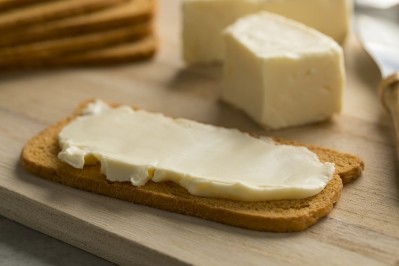The new hybrid? Blending plant-based proteins with fish by-products, algae, and insect larvae

‘Hybrid’ or ‘blended’ products are attracting attention for their potential to significantly reduce meat consumption, while maintaining a meat-like taste, smell, appearance, and cooking behaviour.
For the most part, so-called hybrid products are made up of two or more distinct sources of protein. Minced meat products made up of 50% vegetables and either 50% beef or pork are one such example. Industry players are also investigating blending fungi-based mycoprotein with meat for the retail market.
Potential for hybrid production also exists within cellular agriculture, whether through blending cell-based meat with plant-based proteins, cultivated fat with plant-based proteins, or developing hybrid dairy products containing cultivated milk fat.
But the hybrid categories don’t stop there. In Norway, researchers are working to develop novel hybrid foods that combine plant proteins with unlikely ingredients derived from fish and poultry, algae, and insect larvae.
A move away from ‘highly processed plant isolates’
The research project, coined HybridFoods, is funded by the Research Council of Norway. Running for four years, from October 2021 until September 2025, the programme is headed up by the Norwegian Institute of Food, Fisheries and Aquaculture Research (Nofima).
Collaborators include the Department of Clinical Medicine, University of Bergen; Centre for Applied Research at NHH Norwegian School of Economics; and the Department of Agrotechnology and Food Sciences, Wageningen University & Research.
The project aims to develop nutritious and healthy prototype meat analogue products based on novel upcycling and extrusion technology.

In so doing, it responds to the quality of current meat analogue products on the market, explained Nofima, which describes such products as ‘mainly based on highly processed plant protein isolates’ with the potential to contain ‘inadequate levels of essential amino acids, vitamins, and n-3 PUFAs’.
‘Chicken’ chunks? Alt sausages and burgers?
A variety of ingredients are being investigated under the HybridFoods project to mix with high protein legumes, from seaweed to microalgae, insect larvae and fish and poultry by-products.
“We are working with the valorization of by-products from the fish and chicken processing industry,” Åge Oterhals, senior scientist at Nofima and HybridFoods project manager, told FoodNavigator. Theses could include fish heads and backbones, and chicken carcasses. Entrails are not part of the project as they are currently downcycled into feed.

As to which specific prototype products the project will look to develop, the researcher explained the team is developing ‘technology for the manufacturer of a fibrous product’. “After the extrusion process, this has the form of a thick belt with a fibrous internal structure that can mimic meat.”
The extruded product can end up being the finished form, or else it can be further restructured and formulated into meat analogue products. “As an example, this could be products that taste and have the structure of chicken chunks,” Oterhals continued.
“Use in sausages or burgers will also be an option in minced form.”
Spotlight on texture
The focus on high moisture extrusion (HME) technology is central to the research. “HME technology gives us new possibilities to incorporate and reformulate [certain] by-products into food products with a structure similar to other known food items,” Oterhals explained.
HybridFoods will apply an ‘advanced analytical platform’ for the physicochemical and techno-functional characterization of ingredients, food mixtures, and prototype products.
The researchers believe that by using minimally processed ingredients and protein plasticization technology, energy consumption will be reduced, texture formation improved, and product ‘juiciness’ obtained.
The project also includes sensory testing by a trained panel. Texture characterization will be linked to the sensory perception evaluation.
“One of the main objectives in this project is to study and characterize [variations between different ingredients] and understand how this impacts fibrous structure formation in the extrusion process,” we were told.
Further testing will be sought in collaboration with Norway's University of Bergen, which has the capability of evaluating effects of optional ingredient mixtures on nutritional quality and bioactivity.
In collaboration with the NHH Norwegian School of Economics, environmental and societal impacts – based on life cycle assessment and cost-benefit analyses – will also be examined.
















